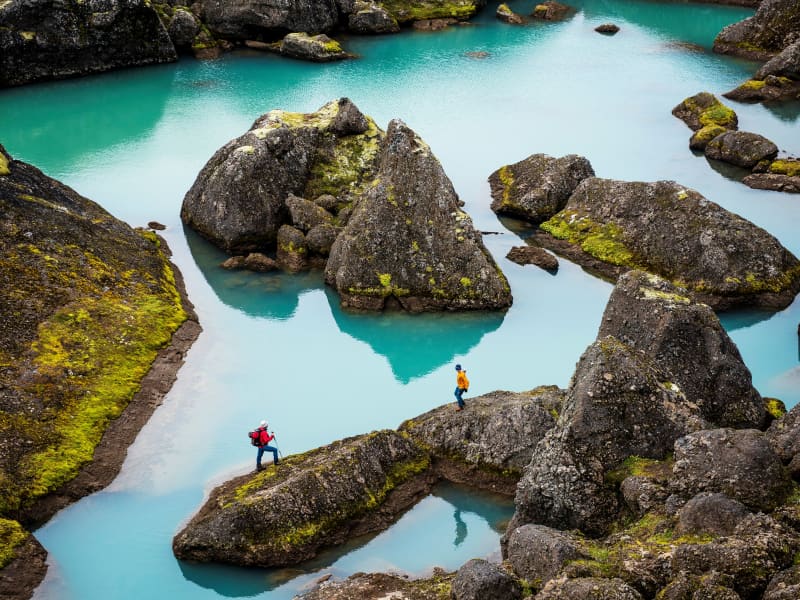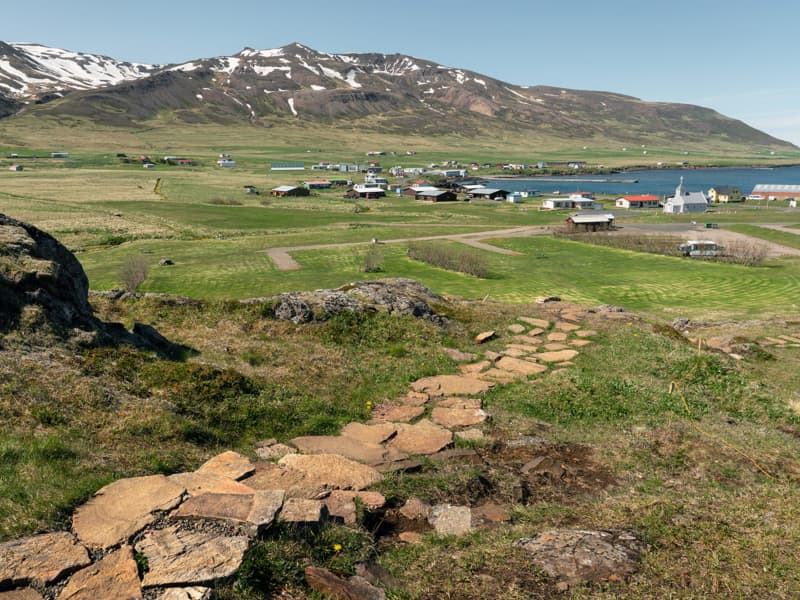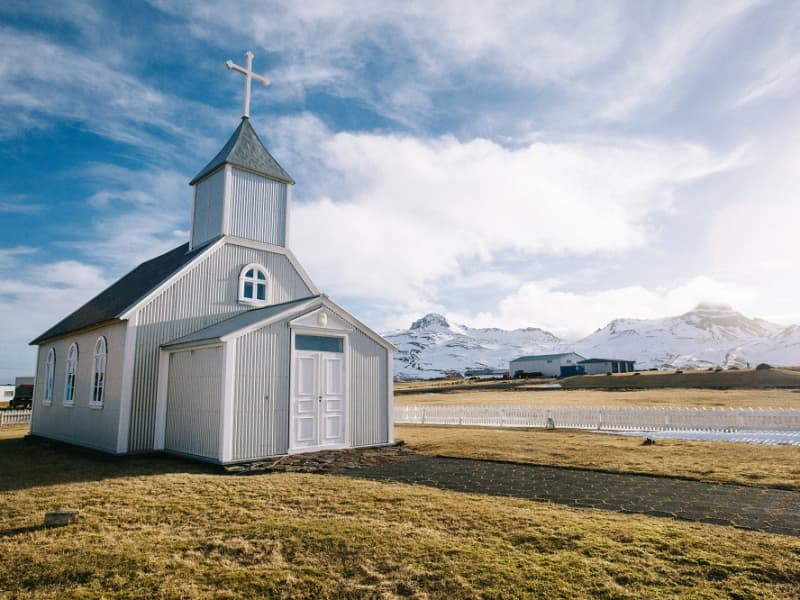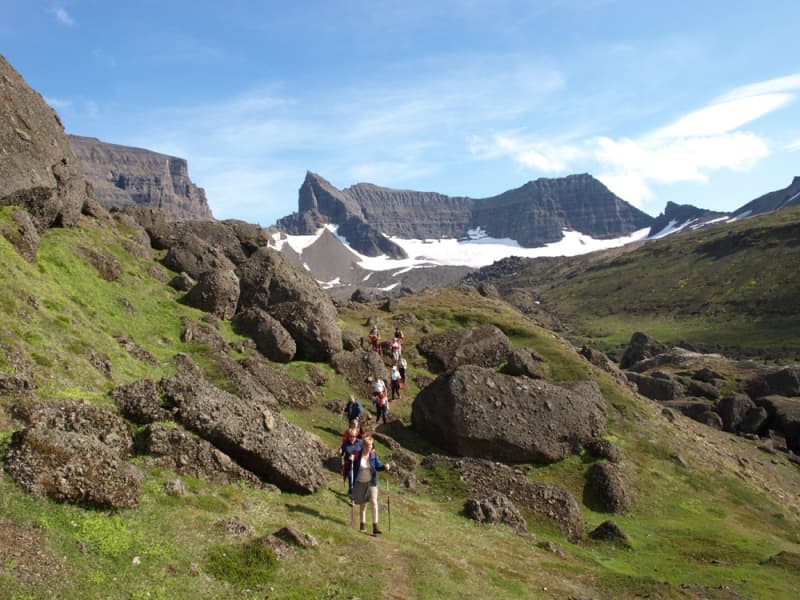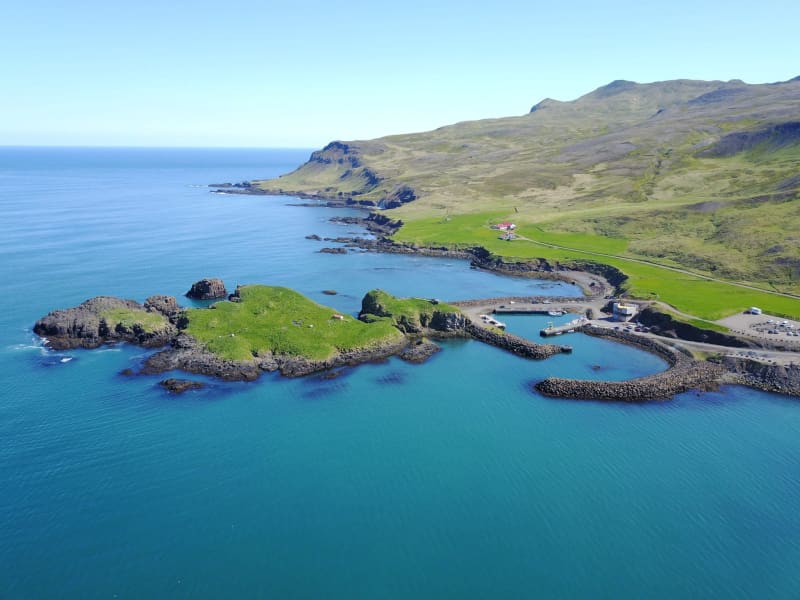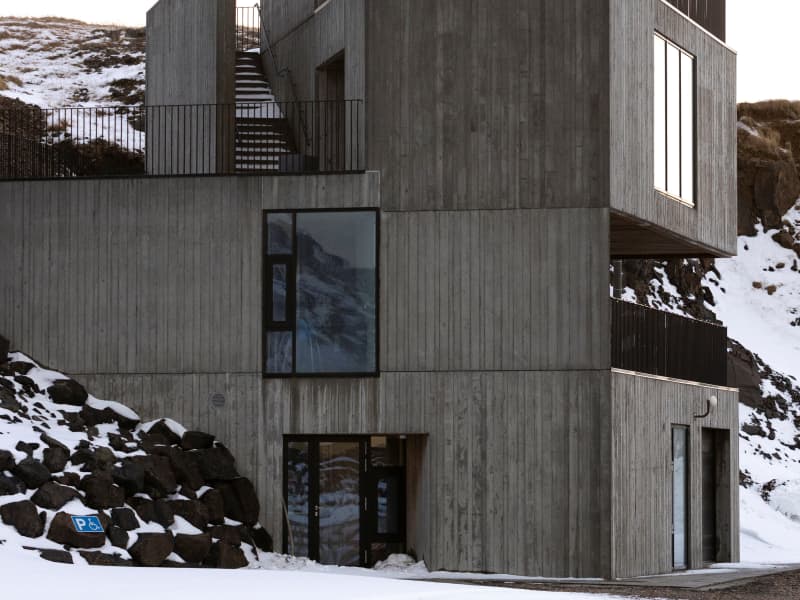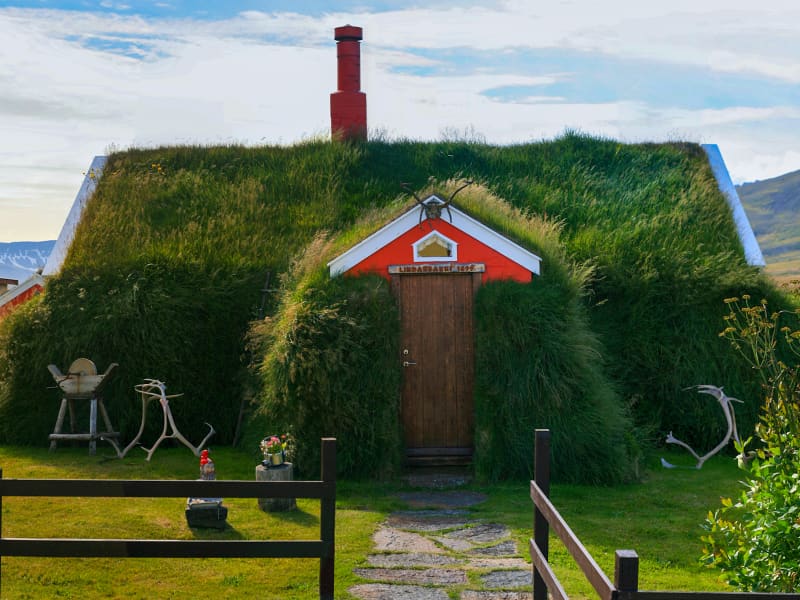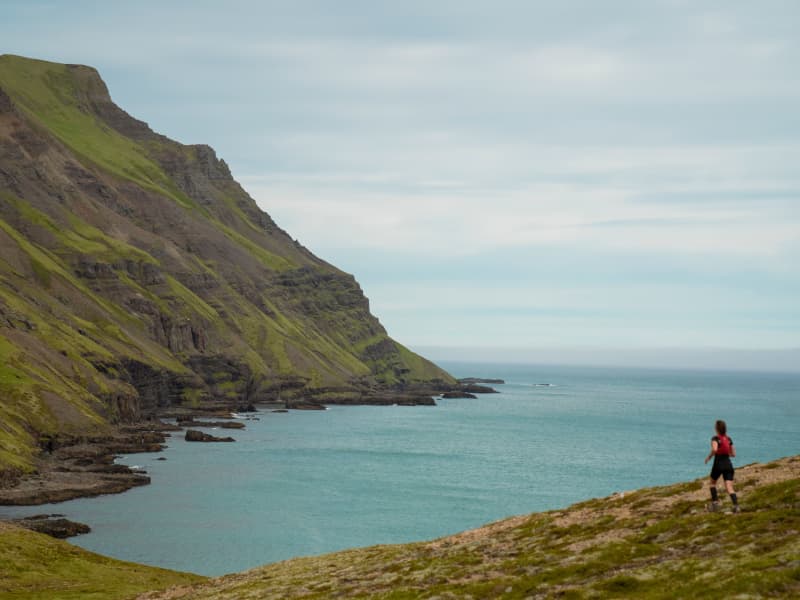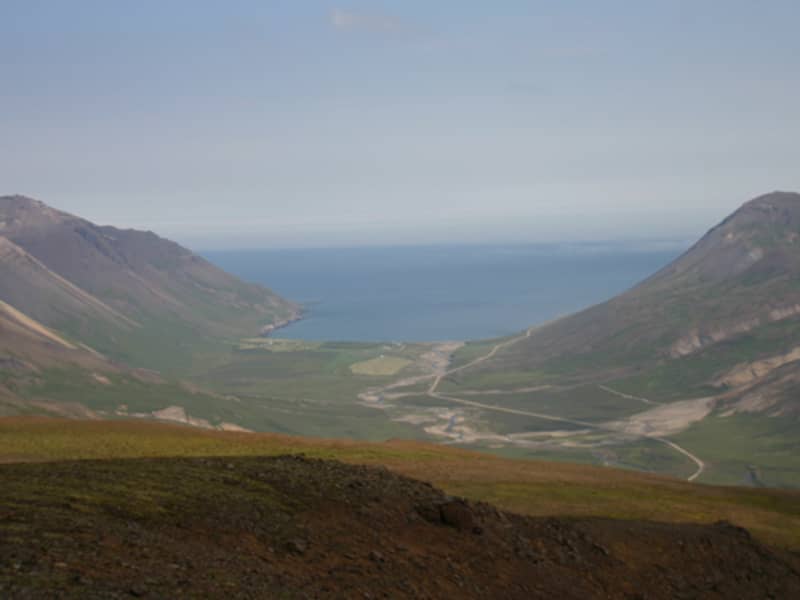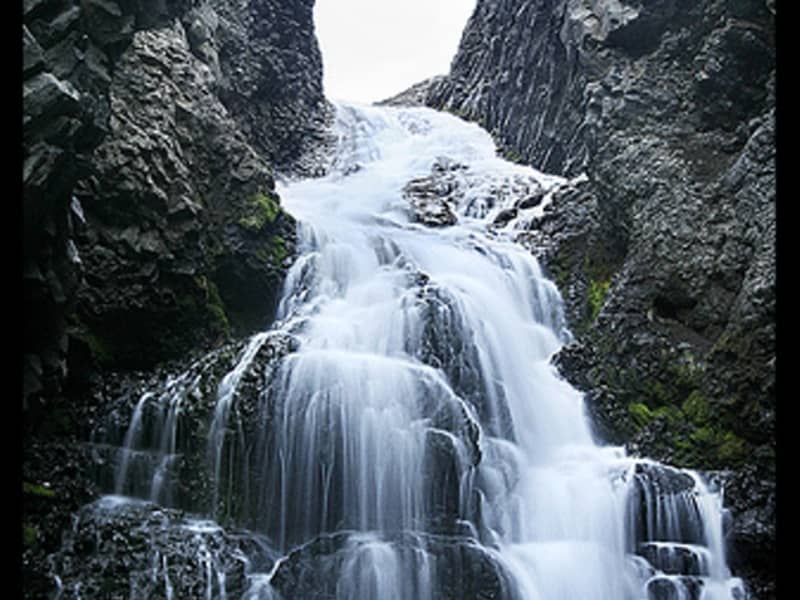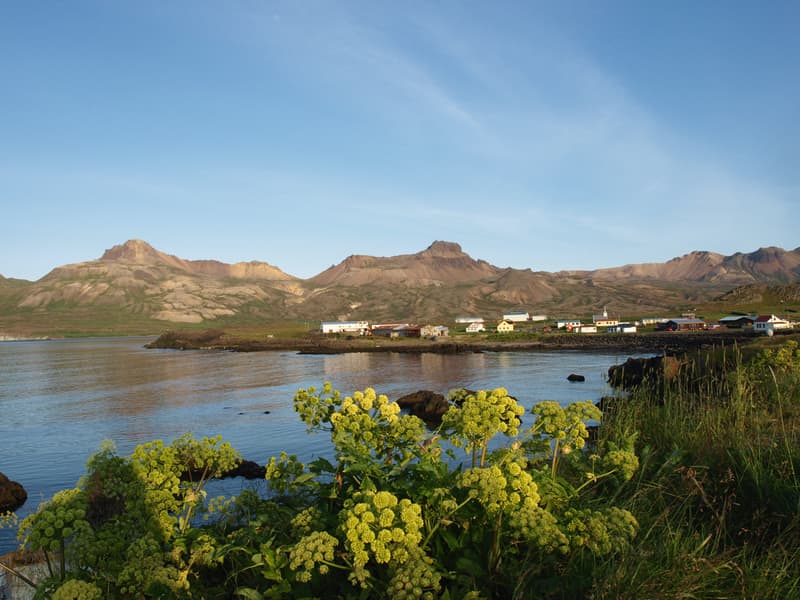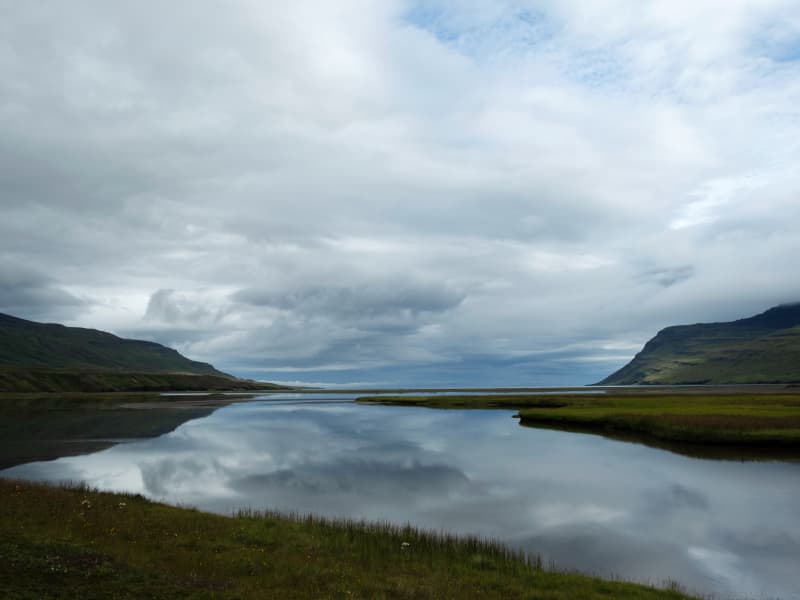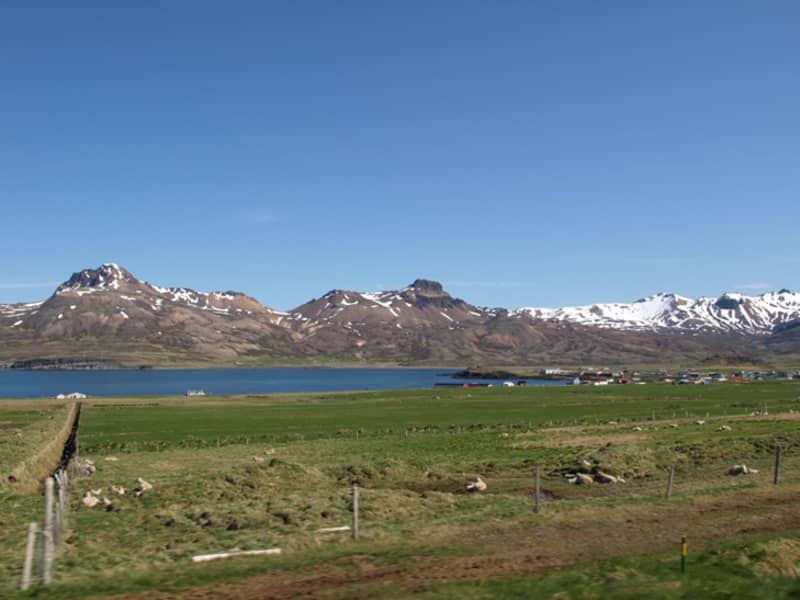Njarðvíkurskriður and Naddi
Until the year 1949, when passable road came about, all traffic through the Njarðvíkurskriður screes between Njarðvík and Borgarfjörður Eystri was either on foot or on horseback. Njarðvíkurskriður were considered extremely dangerous, especially in winter, because of avalanches and, when raining heavily, mudslides. In such conditions, travellers in the area were putting their lives on the line. The screes hold sheer cliff drops down to the sea and above them steep slopes of mudslides, riddled with gullies.
The road to Egilsstaðir from Borgarfjörður over the pass at Vantsskarð was opened in 1954, significantly higher up in the screes that the old horse track. Most recent road construction was in the year 2019 when the road was paved.
More than one version exists of the folk tale of Naddi. Legend has it that in the time of the family of Björn Skafinn, the road along Njarðvíkurskriður became almost impassable because of a monster which had the lower body of a man and upper body of a beast and lived in a gully since named Naddagil. This monster ambushed travellers, especially after dark, attacked them and killed many. Finally, a valiant farmer from Borgarfjörður Eystri managed to overcome the ominous monster and force him into the sea. A cross was erected to mark the spot and still stands there.
Mystery surrounds the cross in Njarðvíkurskriður, bearing a Latin inscription and the date 1306. Many have written about this cross and speculated about its age an why it was erected in the first place and then constantly renewed. The folk tale of the monster Naddi is connected to Njarðvíkurskriður and the cross, which is sometimes called Naddakross as shown in this old four-line stanza:
The cross of Naddi is fallen tower. Our lives are lacking protection but God´s sacred pover will ensure its resurrection.

